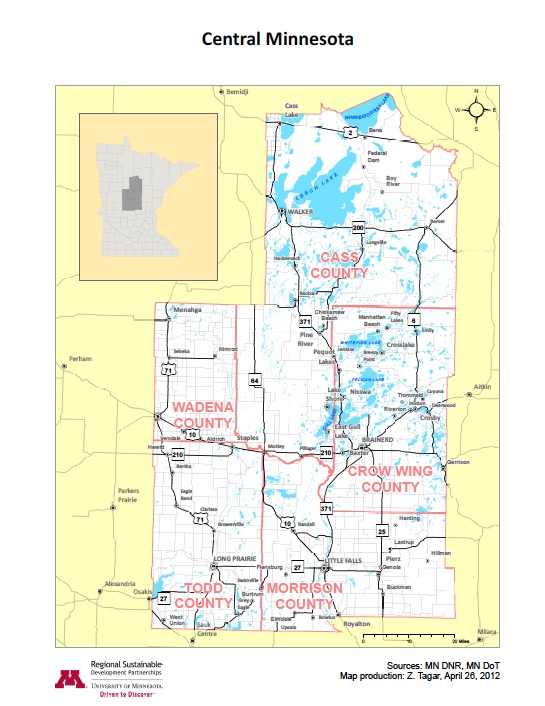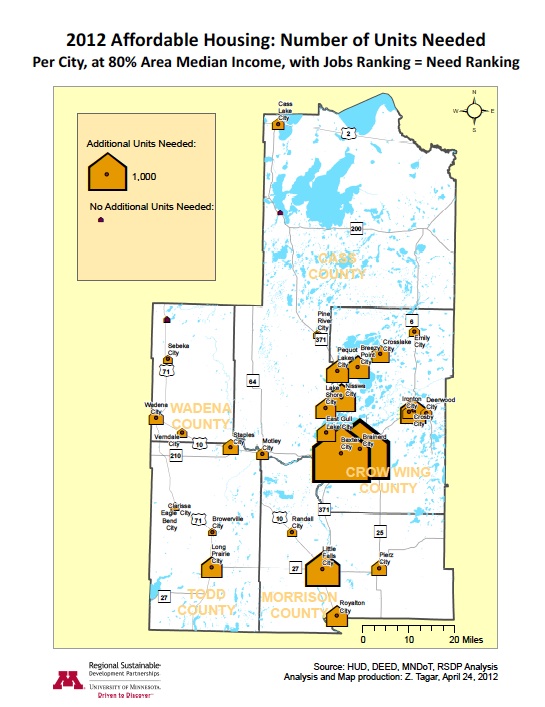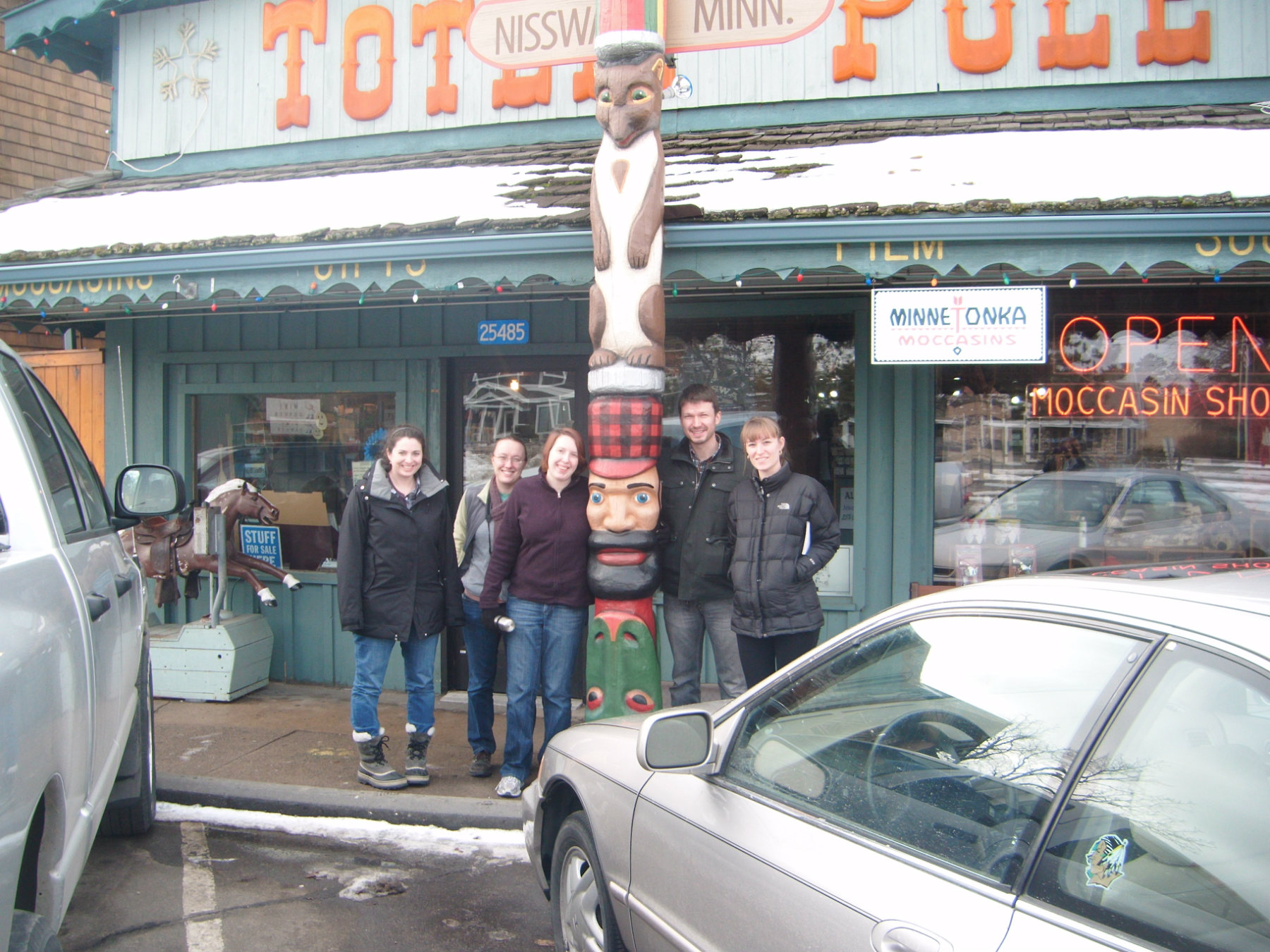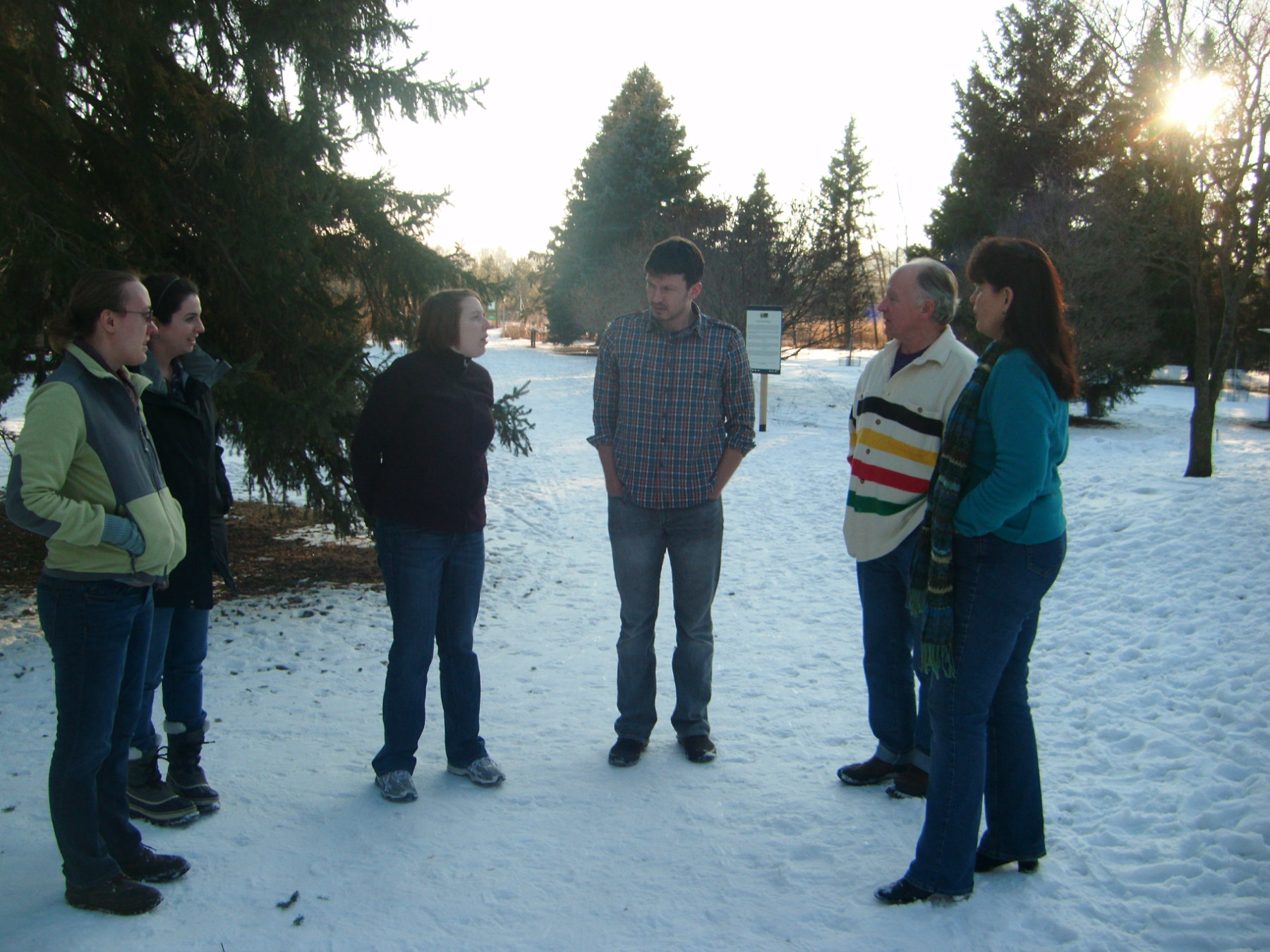Local Government
A deliverable of the Resilient Region project was to provide policy recommendations for Region Five local units of government that align with the plan when revising ordinances, updating comprehensive plans or considering approaches to natural resource management.
Click on the title to view:
Model Ordinances for the HUD/Region 5 Resilient Region Sustainability Project Initially authored by the William Mitchell College of Law Community Development Clinic in March 2013 and revised by Phil Hunsicker and colleague land use experts throughout the region in January 2014. Support came from the National Joint Powers Alliance to revise this material to include comments and recommendations from the Mid-Minnesota Builders Association and their affiliate the National Association of Home Builders and the Greater Lakes Area Association of Realtors.
Recommendations by: Mid-Minnesota Builders Association and their affiliate National Association of Home Builders and the Greater Lakes Area Association of Realtors
Stormwater Management County Policy Review and Draft Model Ordinances Authored by William Mitchell College of Law May 2013.
Watershed of Region Five; managing the regions water runoff Authored by William Mitchell College of Law May 2013.
Wildlife & Habitat Protection; Options for the Resilient Region Project Authored by William Mitchell College of Law June 2013.
Comparing and Contrasting Shoreland Ordinances with information on reference material for Shoreland Ordinances. Authored by William Mitchell College of Law June 2013.
Model Comprehensive Plan Policies and Model Ordinances to Implement Livability Authored by the University of Minnesota School of Law June 2012.
Supporting Resilient Region: A Best Practices Toolkit for the Central Minnesota Sustainable Development Plan Authored by the University of Minnesota School of Law July 2012.
Our region consists of 5 counties, 65 cities, 155 townships and 1 tribe. The Central Sustainable Development plan includes a number of resources to help Local Units of Government.
Our Plan Presented August 14, 2012, addressed the issue of sustainable housing, land use, economic development and transportation in a number of ways.
It also includes more detailed analysis of assets and needs within the region in the areas of: affordable housing (complied by Central Minnesota Housing Partnership), transportation (by Region Five Development Commission ), land use (by EnVision Minnesota) and economic development (by Region Five Development Commission ).
 Regional Profile compiled by Nate Dorr, Analyst for the Minnesota Department of Employment and Economic Development, provides information regarding regional trends.
Regional Profile compiled by Nate Dorr, Analyst for the Minnesota Department of Employment and Economic Development, provides information regarding regional trends.
Map Narratives provides additional information and insight into the five-county CentralMinnesota region’s current and past conditions. Thenarratives provide information that compliments and expands upon map information and includes references to the “Recommendations” established in the Resilient Region Plan. The document includes population density, minority population, aging population, lakes and streams, aquatic invasive species, water access, agriculture and forestry, affordable housing, hospitals and clinics and education.
Our partners, University of Minnesota Regional Sustainable Development Partnership, University of Minnesota Center for Urban/Regional Affairs, University of Minnesota Law School and William Mitchell College of Law produced a number of documents to support the plan, which may also be useful for local units of government. Additional local goverment resources can be viewed by clicking here.
|
Model Comp Plan provides sample city and county policies to support sustainable land use, affordable housing, transportation, and economic development. (Final Report Reference: Appendix I) |
|
|
The Policy Toolkit includes resources regarding economic development, housing, land use, natural resources, and transportation. (Final Report Reference: Appendix H). |
County Policy Analysis: Michael Dorfman, University of Minnesota Regional Sustainable Development Partnership, analyzed the Cass, Crow Wing, Morrison, Todd and Wadena County policies. Each topic is analyzed in its own document (Final Report Reference: Appendix A-21 a-h).
City Policy Analysis: John Sisser, University of Minnesota Regional Sustainable Development Partnership, analyzed the Long Prairie, Little Falls, Walker, Brainerd, and Wadena city policies. Each topic is covered in its own document (Final Report Reference: Appendix A-20 a-h).
|
Water and Natural Resources Policy Analysis Transportation Policy Analysis Parks, Trails, Open Space and Recreation Policy Analysis
|
William Mitchell College of Law Research Projects: William Mitchell College of Law Community Development Clinic students were engaged in research activities on topics directed by Workgroup leaders. These reports were used in the development of our plan:
Microfinancing Options provides an evaluation of microfiancing options for Region 5. It was prepared by Holly Hinman, Certified Student Attorney, Caroline Devany, CURA/NPCR Intern, Macalester College, and Diane Marie Dube, Supervising Attorney (Final Report Reference: Appendix A-22a).
Angel Investing Evaluation by Max Page, Student Certified Attorney, and Diane Marie Dube, Supervising Attorney. Evaluation of angel investing options for Region 5 (Final Report Reference: Appendix A-22b).
Transportation Funding Summary Memo by David Howe, Certified Student Attorney, and Diane Marie Dube, Supervising Attorney. A summary of transportation funding systems in Minnesota with Region 5 priorities (Final Report Reference: Appendix A-22c).
Review of Local Zoning Ordinances for Housing Affordability Barriers was prepared by David J. Stellmach, Certified Student Attorney, with Diane Marie Dube, Supervising Attorney. It evaluates the zoning ordianes for barriers to housing affordability in 20 Region 5 communities (Final Report Reference: Appendix A-22d).
Housing Barriers to Affordability, prepared by Susie Vang, Certified Student Attorney, and Diane Mare Dube, Supervising Attorney (Final Report Reference: Appendix A-22e), reviews typical barriers to housing affordability found in zoning ordinances.
CMSDP Zoning Typology Memo (Legal Research for the Land Use Work Group) by Elizabeth Anne Lyons, Certified Student Attorney, and Diane Marie Dube, Supervising Attorney. Research paper on zoning types (Final Report Reference: Appendix A-22f).
CMSDP Variance Changes Memo by Elizabeth Anne Lyons, Certified Student Attorney, and Diane Marie Dube, Supervising Attorney. Research paper summarizing recent changes in Minnesota variance law (Final Report Reference: Appendix A-22g).
CMSDP Sustainability in Current Zoning Memo by Elizabeth Anne Lyons, Certified Student Attorney, and Diane Marie Dube, Supervising Attorney. Research paper evaluating two local zoning ordinances for sustainability concepts (Final Report Reference: Appendix 22-h).
The Affordable Housing Ordinances memo identifies areas in the final comprehensive plan for affordable housing that need additional research. The memo was prepared by David H. Holt, Certified Student Attorney, and Diane Marie Dube, Supervising Attorney (Final Report Reference: Appendix A-22i).
A requirement of the HUD/DOT/EPA grant was to conduct a Fair Housing Equity Assessment – FHEA (Final Report Reference: Appendix E-1). This was prepared by the Central Minnesota Housing Partnership (CMHP) with assistance from R5DC, University of Minnsota, and EnSearch.

The Affordable Housing Location Model was created by Zach Tagar to help the project determine where there was a need for affordable housing within the region.
 For access to this model contact Deanna Hemmesch, Executive Director, Central Minnesota Housing Partnership at deanna@cmhp.net
For access to this model contact Deanna Hemmesch, Executive Director, Central Minnesota Housing Partnership at deanna@cmhp.net
Other Resources:

